-
Posts
574 -
Joined
-
Last visited
-
Days Won
2
Content Type
Profiles
Forums
Blogs
Gallery
Events
Store
Posts posted by Trooper_D
-
-
I did consider Sir Arundell Neave but discounted him as I was concerned by the lack of a middle name beginning with M. I think that a better fit would be Arthur Montagu Neave (b.1842 liv. 1891). He was descended from the second son of the 1st baronet; if the 1st baronet was the original grantee of these arms, then being descended from the second son would explain the crescent in the arms for Arthur Montagu Neave. Furthermore, as the attached 1863 Gazette entry shows, he was an ensign in the 36th Foot at one point in his life.
This is confirmed by the extract from his 1865 marriage registry entry in India (extract here).
I'm afraid that this may have been the highpoint in his life as the 1881 census describes him as a tobacconist, the 1891 census as a retired Army schoolmaster and the 1901 census as a book buyer. He died in 1902.
He appears on thepeerage.com, here
http://www.thepeerage.com/p31411.htm#i314105
0 -
In theory, all coats of arms are unique with only one person having any one design. The traditional way of looking up coats of arms is to use Papworth's Ordinary of Arms, which is what I have done. The best fit is to the family of Neve of Norfolk (see extract below). The crescent in the top left quarter indicates that the descent is from a second son of the original grantee of arms.
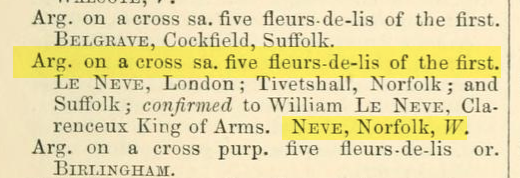
Source: https://archive.org/details/alphabeticaldicta02papw/page/655/mode/1up
Fairbairn's Crests, however, says that the crest (over the shield) is of Neve of Tenterden, Kent.
https://www.myfamilysilver.com/pages/crestfinder-crest.aspx?id=177482&name=Neve
However, between the two sources, we can safely say that this is the heraldic achievement of the Neve family. But who AM is is another matter, of course!
Edit: More research reveals what I should have realised: the Neave family also use this coat, with its most recent famous member being Airey Neave, of course. See near the bottom of this page,
https://www.whitelionsociety.org.uk/news/6-news-from-the-college-of-arms
This might be a fruitful area to search.
1 -
Thank you for posting these side-by-side images, Volovonok. They give a clearer indication of the complications of this issue. It is almost like the blade has been shortened from both ends. Let us hope that your examination of the etching throws more light unto this conundrum.
1 -
Is it possible it is a broken blade which has been ground down?
0 -
2 hours ago, 1812 Overture said:
Thirteen years have passed. . .
 0
0 -
15 hours ago, ArHo said:
Well, the insanity goes on. There is another pair of these reenactment-pictures up for sale (the beard is so clearly glued to the mans face its ridiculous) and bidding has reached 2900 (!) Euros. I just cannot understand it. If anyone is interested to have a look:
By the way @Simius Rex - It looks like the arrows painted on all these pictures are very similar, all from one seller who perhaps got a bunch of these and now slowly sells them a piece a time? Just a guess...
The bidding is all the stranger for the seller saying no more than that the man is wearing an 1850 model busby.
It has to be said, of course, that this is careful wording which, while factually correct, allows a naive bidder room to read more into the description than is justified.
1 -
The devastation caused by this ghastly explosion is almost beyond belief and is a major blow to an already stricken Lebanon.
In this context, and in the light of how close he was, we should be thankful for the survival of your friend, a fellow member of our community, despite injury - and what sounds like a harrowing journey to get help - and the loss of his home. How fortunate that his family wasn't with him at the time.
Let us hope that his recovery in body and mind is a speedy one.
1 -
35 minutes ago, Alex K said:
Again, Yes interesting stuff, unfortunately the links don't work for me
That's very annoying, Alex! However, the image I posted is all that is relevant there for this thread. If you wanted to see the rest of the volume, a search on archive.org using the title given in my original post is probably the best route for you.
0 -
Oh joy, oh rapture unforeseen! It turns out that that ever wonderful website, archive.org, hosts a scan of Army Regulations, India, Vol. VII - Dress, a link to which is below. WARNING: this volume is additive and many hours can be
wastedspent browsing it!https://archive.org/details/in.ernet.dli.2015.505458/page/n5/mode/2up
Now, to matters in hand. It is pp. 19 & 20 that concern us and I reproduce the relevant extracts, for convenience, below.
Source: https://archive.org/details/in.ernet.dli.2015.505458/page/n31/mode/2up
0 -
17 hours ago, Hugh said:
4. He also served as Kitchener's aide-de-camp in South Africa and later in India. He's wearing the aigulette of an aide, although in the USA, wearing it on the right shoulder denotes an aide to the President. I had thought the UK followed the same practice, aide to the sovereign. This uniform could reflect that service. (A likely time to have such a photograph made)
Apologies, I should have spotted that you also made the ADC connection, Hugh.
0 -
12 hours ago, Bayern said:
Hello ,I found that the pic is from 1912 and between December 1910 until June 1916 Major Maxwell was Military Secretary of the Viceroy Of India Lord Hardinge . then the Uniform showed must be a pattern only used by Officers of the Army appointed to the Viceroy Service
The Embroidery is similar to that of the one of the Viceroys uniform coat .
It seems like Bayern was exactly on the right track!
Below is a photo of such a tunic sold by Bosley's five years ago, described as "Edwardian Scarlet Uniform of an ADC to a Viceroy". The flower in the embroidery on the front of the tunic I take to be the Lotus flower, the symbol of India. cf with the tunic worn by the then ADC to the Lord Lieutenant of Ireland, the embroidery of which incorporated the shamrock, my source* tells me.
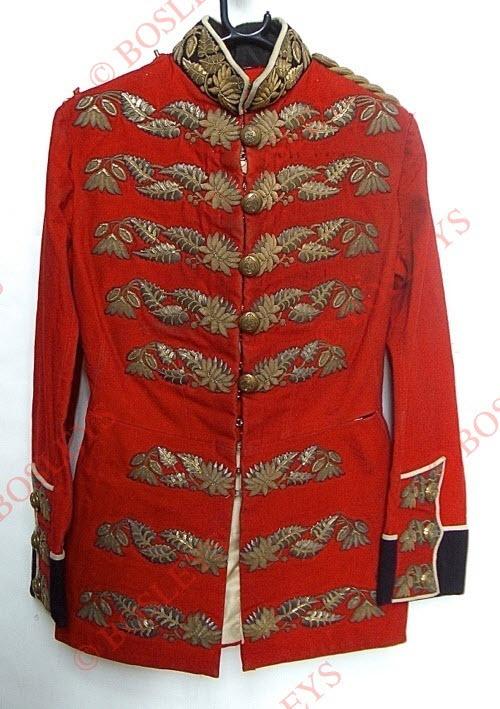
* 'British Uniform Pattern Book', Wm. Jones & Co, London, 1886 (reprinted 2006, DP & G, Doncaster) p. 6.
Edited to add this photo of Charles Noel Hill, 9th Lord Berwick, who was Aide de Camp to The Viceroy of India between 1922 and 1925.
0 -
-
1 hour ago, saxcob said:
The painting shows a scene in the town where I used to live. The building in the middle was demolished in 1959.
Why on earth would someone want to demolish such a splendid building?? Fortunately, the tower still stands, Google tells me.
May I ask where the Jones picture is exhibited, please? I ask because he painted another version of it which can be seen below, and which is exhibited in Nottingham Castle Museum and Art Gallery.

Source: https://artuk.org/discover/artworks/andernach-prussia-47436#
You will note that he didn't feel the need to portray himself in this version, for some reason.
1 -
This page agrees that it is the badge of the 1st Hussar Regiment of Estonia,
The one shown on the page linked to was made in Estonia, though.
Here is an Estonian Wikipedia page about the regiment which shows an illustration of the badge and if you Google "Ratsarügement" you will find lots more on the regiment and its badge.
0 -
See my post in the Baltic forum
1 -
30 minutes ago, peter monahan said:
I once made one in a real hurry for a fellow unit member who'd lost his. The only leather I had to hand was 'sole bend' - 3 to 4 cm thick. Damn near killed the poor fellow the first time he wore it! Opps!
A few years ago, when browsing old editions of the (London)Times online, I was astonished to read a letter in an edition from the 1850s (I seem to recall) from a recently-retired officer decrying that soldiers were still expected to wear the leather stock and noting that - never mind the difficulties of fighting whilst wearing it - he had observed men fainting on parade because of the restriction to their blood supply caused by it. Your friend was having a completely historically authentic moment, it seems. It must have made him proud - once he came round
 1
1 -
8 hours ago, Simius Rex said:
I was struggling to recognize what the black fabric around the subject's neck is, but you successfully identified it as a "Black silk stock" (which I assume is like a neckerchief) that officers of this period wore.
Officers were lucky. As this site explains, for ordinary soldiers, "[a] three and a half inch (8cm) leather stock was worn around the neck to preserve a 'soldierly' aspect, which was rarely allowed to be discarded even on campaign."
These two images, to be found on many Pinterest pages, are said to be of a 5cm high example in the The Regimental Museum of The Royal Welsh.
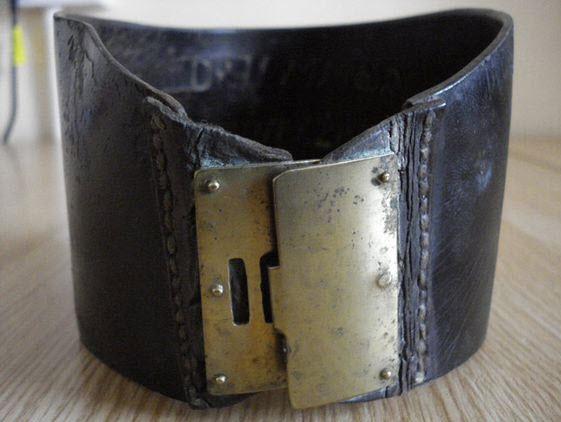
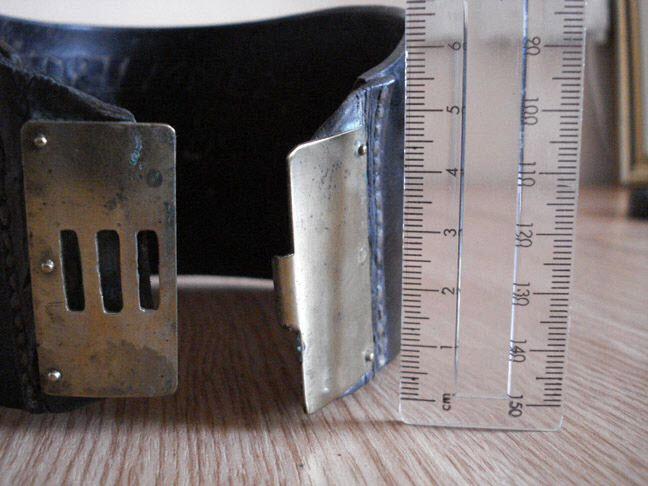
It was, apparently, also worn by the US Marine Corps and gave rise to their nickname of 'Leathernecks' (or so says Wikipedia!).
0 -
The mess jacket you show, Simius, was an evolution of the stable jacket, which - as the name suggests - was an undress jacket worn when working in the stables.
However, I think it is a red herring in this particular case. As the OP states, the figure is from a small detail and I would suggest that the ‘absence’ Of buttons etc is simply down to the small scale the artist is working in, here.
As an aside, I agree with you that the figure is wearing a gorget and would add that the black area round his neck is a representation of the black silk stock officers of the time wore and which you can sort of see in the interesting image of the working dress of Royal Sappers and Miners you posted. I suspect that this ‘working dress’ was more generally the undress worn by officers of the period, which would have been worn rather than Full Dress for 'walking out' - as shown in the OP's picture.
1 -
...and a smile throughout! This was, of course, the wonderful Mae of the C&Rsenal YouTube channel. If you want to hear her views on the Lewis gun (based on her experiences firing it on the range) in a video worth watching in its own right from the start, here's the link,
0 -
2 hours ago, dond said:
Thanks for the reply. BTW these all look fake to me. I could make them in my garage.
1 hour ago, JapanX said:Sounds like you have quite a garage there.
... which brings us back to this story (found elsewhere on GMIC), which illustrated to me just how low-tech you can be and still produce 'acceptable' fakes (made in a garden shed, apparently),
https://www.derbytelegraph.co.uk/news/derby-news/derby-fraudster-made-thousands-selling-4208225
Thanks for posting the fascinating pictures of what I assume is an Imperial Russian mint, JapanX.
0 -
I can't help but note the similarities between this mystery badge and the cypher of Carlos I of Portugal, as shown engraved on the detail from an image of a Luger pistol destined for Portugal, below.
I cannot give an explanation as to why this might be but I note that Kaiser Wilhelm visited Carlos in Portugal in 1905. Carlos was, of course, assassinated in 1908.
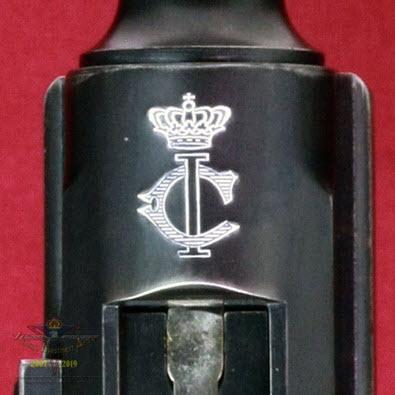
Source: https://www.phoenixinvestmentarms.com/2145KingCarlos00.html
0 -
Glenn can answer for himself but I think that JapanX has put his finger on the answer.
If you are fairly new to all this, you might not be aware that, during the period we are talking about, each of the states making up 'Germany' compiled lists of their officers, broken down into units, with one of the pieces of data shown against each name being their awards. These are the rank lists. There are people round here who know their way round these rank lists backwards and can very quickly search for any given combination of awards to narrow down a particular combination to a name or groups of names.
I should add that, if you recognise the unit from the uniform the subject is wearing, it means that you can go straight to the rank list for that unit, which in turn cuts down the time required to search.
That is not to say, of course, that Glenn doesn't have a photographic memory and never forgets a face
 0
0 -
4 minutes ago, JapanX said:

Well spotted - but, in fairness, Glenn was even quicker the first time. So how did he do it, then???
0 -
On 24/03/2008 at 13:11, webr55 said:
The original post was a long time ago, but I thought - for anyone who reads it now - I would provide a bit more information on this hussar atilla, a better image of which can be seen on the Imperial War Museum's website, here,
https://www.iwm.org.uk/collections/item/object/30097064
It belonged to Vladimir Littauer who served in the 1st Sumsky Hussars from 1913 and survived the Great War, eventually to end up in NYC running a riding school and, afterwards, becoming one of the USA's leading equestrian instructors and, indeed, theoretician who advocated the 'forward seat' riding style. His Wikipedia page appears to be accurate,
https://en.wikipedia.org/wiki/Vladimir_Littauer
Perhaps of more interest to GMIC: along with a number of equestrian training books, he wrote Russian Hussar - A Story of the Imperial Cavalry, in which he describes his military career from the Nicholas Cavalry School in St. Petersburg to the Revolution and, afterwards, fighting with the White Russian forces. It is still in print and is a 'must-read' for anyone interested in the Imperial Russian cavalry. I am reading it at the moment but have only just got to the start of the Great War so cannot yet say whether he received the awards on this bar and, thus, whether it might be his (the IWM page doesn't mention it).
0



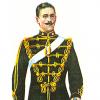


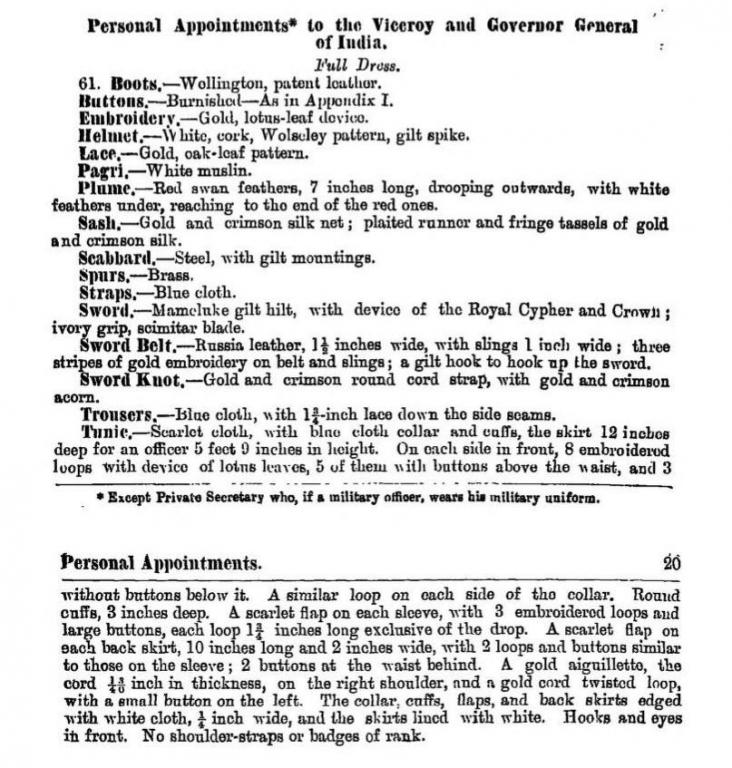



Interesting British Short Sword of George IV Reign
in Swords & Edged Weapons
Posted
Have we addressed the question as to why a blade introduced in 1845 would be on a hilt dating to no later than 1830?